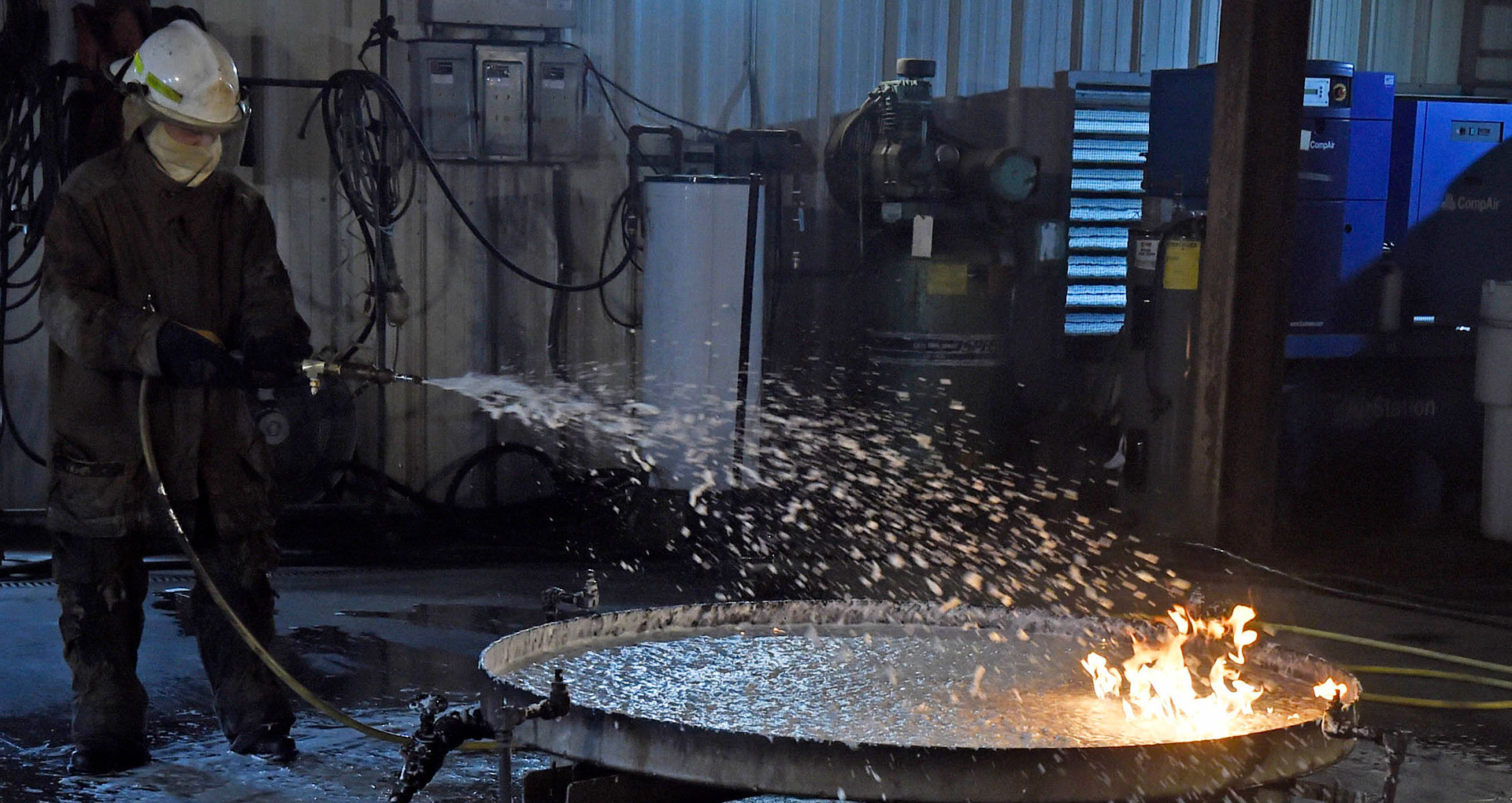 John Farley, director of fire test operations at the Naval Research Laboratory, tests the effectiveness of aqueous film-forming foam by spraying it on a gasoline fire. The test took place at the laboratory in Chesapeake Beach, Md. Oct. 25, 2019.
John Farley, director of fire test operations at the Naval Research Laboratory, tests the effectiveness of aqueous film-forming foam by spraying it on a gasoline fire. The test took place at the laboratory in Chesapeake Beach, Md. Oct. 25, 2019.
The Arizona Department of Environmental Quality (ADEQ) has helped fire departments statewide, remove, dispose, and replace over 6,000 gallons of firefighting foam containing per- and poly-fluoroalkyl substances known as PFAS.
The ‘forever chemicals’ are known to have contaminated groundwater in Southern Arizona, and linked to cancer in firefighters.
Since last September, ADEQ and fire departments have collaborated through the state-funded pilot program, Aqueous Film Forming Foam (AFFF) Take Back and Replace program, at no cost to fire departments that can't afford to safely dispose of or purchase alternative foam.
So far 38 fire departments have completed the program and 14 more are scheduled. Over 4,000 gallons of PFAS-free alternative foam have been distributed.
ADEQ's project manager for the program Camille Nehls said the Environmental Protection Agency (EPA) released several recommendations in December 2020, for the removal of firefighting foam such as thermal treatments or incineration, different types of landfills including regular municipal landfills that lack leachate protection and hazardous waste landfills, as well as underground well injection.
“For our pilot program, we chose to go the hazardous waste landfill route because it was essentially the lowest risk,” Nehls said.
To get the firefighting foam to the landfill, an authorized contractor recovers the foam from fire agencies, places it into a tanker, and transports it to a hazardous waste facility located in Beatty, Nevada.
Research shows that incineration may not actually dispose of the PFAS the way ADEQ wants it to. Which is why the agency is on the lookout for ways for the program to be renewed or expanded in the future.
There is an existing Federal Aviation Administration (FAA) regulation in place that requires responding fire departments to certain airports to carry the AFFF, but Nehls said in January information was released stating the development and testing of PFAS-free foams.
“We’re anticipating that once those foams have been found to be as effective as possible… the FAA will essentially roll back the requirement,” Nehls said.
Simultaneously, EPA continues to research best practices for the disposal and destruction of PFAS materials.

By submitting your comments, you hereby give AZPM the right to post your comments and potentially use them in any other form of media operated by this institution.